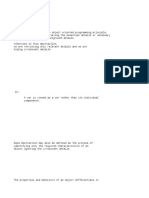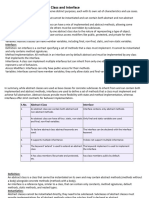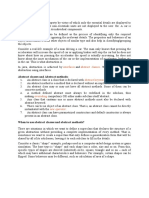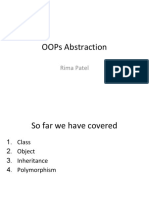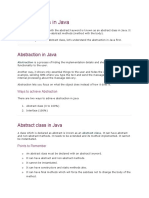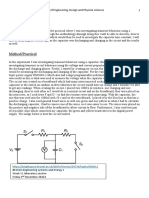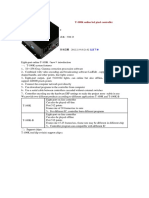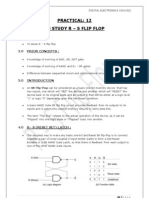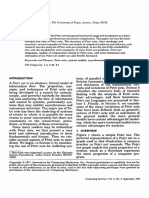0% found this document useful (0 votes)
23 views2 pagesClass 4
The document explains the concept of abstract classes in programming, detailing their characteristics such as the inability to be instantiated, the presence of abstract methods without implementation, and the ability to contain both abstract and concrete methods. It also highlights the advantages of using abstract classes, including enforcing a common interface, enabling polymorphism, and encouraging code reuse. Additionally, it contrasts abstract classes with interfaces and discusses data hiding through getter and setter methods.
Uploaded by
Praveen KaroshiCopyright
© © All Rights Reserved
We take content rights seriously. If you suspect this is your content, claim it here.
Available Formats
Download as TXT, PDF, TXT or read online on Scribd
0% found this document useful (0 votes)
23 views2 pagesClass 4
The document explains the concept of abstract classes in programming, detailing their characteristics such as the inability to be instantiated, the presence of abstract methods without implementation, and the ability to contain both abstract and concrete methods. It also highlights the advantages of using abstract classes, including enforcing a common interface, enabling polymorphism, and encouraging code reuse. Additionally, it contrasts abstract classes with interfaces and discusses data hiding through getter and setter methods.
Uploaded by
Praveen KaroshiCopyright
© © All Rights Reserved
We take content rights seriously. If you suspect this is your content, claim it here.
Available Formats
Download as TXT, PDF, TXT or read online on Scribd
/ 2













